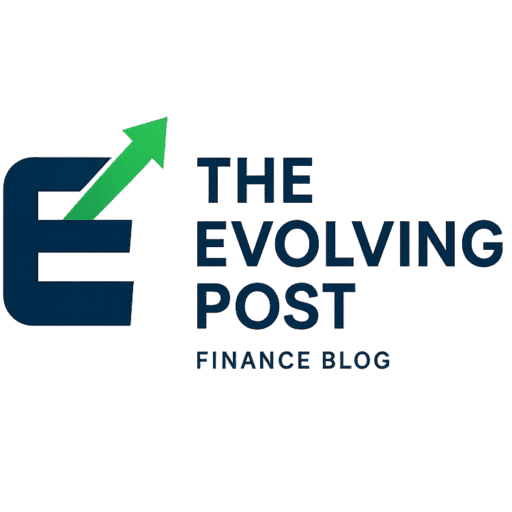As political tensions rise and tariffs complicate the economy, the Fed doubles down on patience — and that could affect your wallet in unexpected ways.
The drumbeat for interest rate cuts is growing louder. Politicians are posturing, investors are speculating, and consumers are waiting to see if relief is coming. Yet the Federal Reserve, led by Chair Jerome Powell, is holding the line — staying patient, data-driven, and committed to long-term economic stability over short-term noise.
This isn’t just a battle of policy. It’s a masterclass in economic resilience.
While inflation softens and employment data cools, calls from President Donald Trump and Republican lawmakers to slash rates are intensifying. But Powell and the Fed’s 19-member decision-making committee aren’t budging — not yet.
Let’s break down why the Fed is choosing caution, what that means for interest rates, mortgages, inflation — and how you can position your money in this high-stakes environment.
Background & Context: A Balancing Act Under Pressure
The Fed’s dual mandate is clear: keep inflation under control and maximize employment. In 2025, that’s become a tightrope walk.
- Inflation is trending lower, but core inflation remains above the comfort zone.
- Employment remains strong in some sectors, but wage growth is slowing.
- Global uncertainty, trade policy frictions, and new tariffs are muddying forecasts.
In a recent appearance before the House Financial Services Committee, Powell emphasized a simple message: “We need more clarity before we move.”
This message isn’t just about prudence. It’s about independence. Despite Trump’s public push for aggressive rate cuts — often citing the European Central Bank’s dovish strategy — the Fed is standing firm in its commitment to long-term price stability.
Deep-Dive Analysis
Impact on Homeowners and Mortgage Seekers
If you’re a homeowner — or hoping to become one — the Fed’s cautious stance may keep mortgage rates elevated for a while longer.
That’s because interest rates set by lenders are directly influenced by expectations of Fed action. When markets think the Fed will pause (or hike), long-term borrowing rates tend to rise or remain sticky.
- Refinancing activity may slow, particularly for those with fixed-rate loans above 6%
- New homebuyers might face continued affordability challenges
- Variable-rate mortgage holders may not see relief until late 2025
The takeaway? If you’re considering a mortgage, don’t wait for the Fed to “rescue” the market. Work with what’s available now and look for lender incentives, rate buy-downs, or creative financing options that mitigate higher borrowing costs.
Impact on Savers and Investors
For savers, the Fed’s patience has a silver lining: yields on savings accounts, CDs, and Treasury bonds remain attractive.
- High-yield savings accounts still offer 4–5% APY
- Short-term Treasury bills remain solid low-risk parking spots
- CD ladders are a viable strategy for locking in yields ahead of eventual rate cuts
Investors, however, face more nuance. Equity markets tend to favor lower rates, but uncertainty creates volatility. For now:
- Defensive sectors (utilities, consumer staples) may offer more stability
- Growth stocks could wobble under high-rate conditions
- Fixed-income portfolios can benefit from active duration management
Position your portfolio to weather short-term turbulence and capitalize on shifts when they come.

Impact on Consumers and the Broader Economy
When the Fed holds rates steady, its effect ripples through the entire economy.
- Credit card APRs remain elevated, putting pressure on consumer debt holders
- Auto loans stay expensive, affecting car sales and dealership incentives
- Small business loans remain costly, limiting expansion for entrepreneurs
And while inflation is slowing in categories like energy and travel, core expenses like food, insurance, and healthcare are still climbing. That means households continue to feel squeezed — despite technically “good” inflation news.
Meanwhile, tariffs introduced by the current administration complicate inflation forecasting. While intended to boost domestic manufacturing, they can also push prices higher for imported goods, creating a dilemma for the Fed:
- Cut rates too early, and inflation may rebound
- Hold too long, and economic growth could stall
It’s no surprise Powell is choosing the slow, steady path.
Political Pressure vs. Institutional Independence
President Trump has made no secret of his desire for interest rate cuts — framing them as a tool to ease borrowing costs and stimulate the economy ahead of elections.
But Powell’s Fed remains laser-focused on data over politics.
Trump’s frequent comparisons to the European Central Bank (ECB) miss key distinctions: Europe is battling disinflation, low growth, and structural stagnation. The U.S., while facing trade risks, remains economically resilient — which justifies a more measured stance.
In recent statements, Fed officials — including Michelle Bowman and Christopher Waller — have shown a diversity of opinion. Some suggest modest cuts may be warranted if economic indicators deteriorate. Others urge patience.
That internal debate is healthy — and underscores the Fed’s commitment to transparent, deliberative governance, even amid political firestorms.
What to Watch in the Coming Months
The Fed’s next major policy review hinges on a few critical data points:
- The June inflation report, due shortly
- Labor market data, including wage growth and job creation
- Trade impacts, especially if tariff escalation affects consumer prices
If inflation continues to decline and labor markets weaken, expect a rate cut by Q3 2025. But if core prices remain elevated, or tariffs raise costs, Powell may hold longer.
For businesses, investors, and consumers, the summer will be a period of watching and waiting.
Actionable Takeaways & Key Insights
- Homeowners: If you’re planning to refinance, don’t bet on rate cuts soon. Explore rate-lock options or refinance only if you can break even in under 3 years.
- Investors: Stay diversified. Watch Fed statements closely for guidance, and consider increasing allocation to dividend-paying equities or short-duration bonds.
- Savers: Take advantage of high-interest savings and GICs now. Yields won’t last forever.
- Business owners: Prepare for continued higher borrowing costs. Explore grants, subsidies, or tax incentives to manage capital expenditures wisely.
- Everyone: Understand that the Fed’s decisions are about stability — not popularity. The more you align your financial planning with macro trends, the less you’ll react emotionally to policy shifts.
Conclusion & Call to Action
In a world of political pressure, social media noise, and global instability, the Federal Reserve is doing what it was designed to do: make slow, steady, informed decisions in the interest of long-term economic health.
That may not please everyone — least of all politicians — but for everyday Americans, it’s a critical safeguard against volatility and overreaction.
Whether you’re saving for a home, investing for retirement, or running a business, now is the time to ground your decisions in patience, prudence, and preparation.
Stay tuned to The Evolving Post for more smart, actionable updates that impact your money and your future — because understanding the system is the first step to changing your financial story.
While this analysis is based on thorough research, it is for informational and educational purposes only and should not be considered financial advice.




